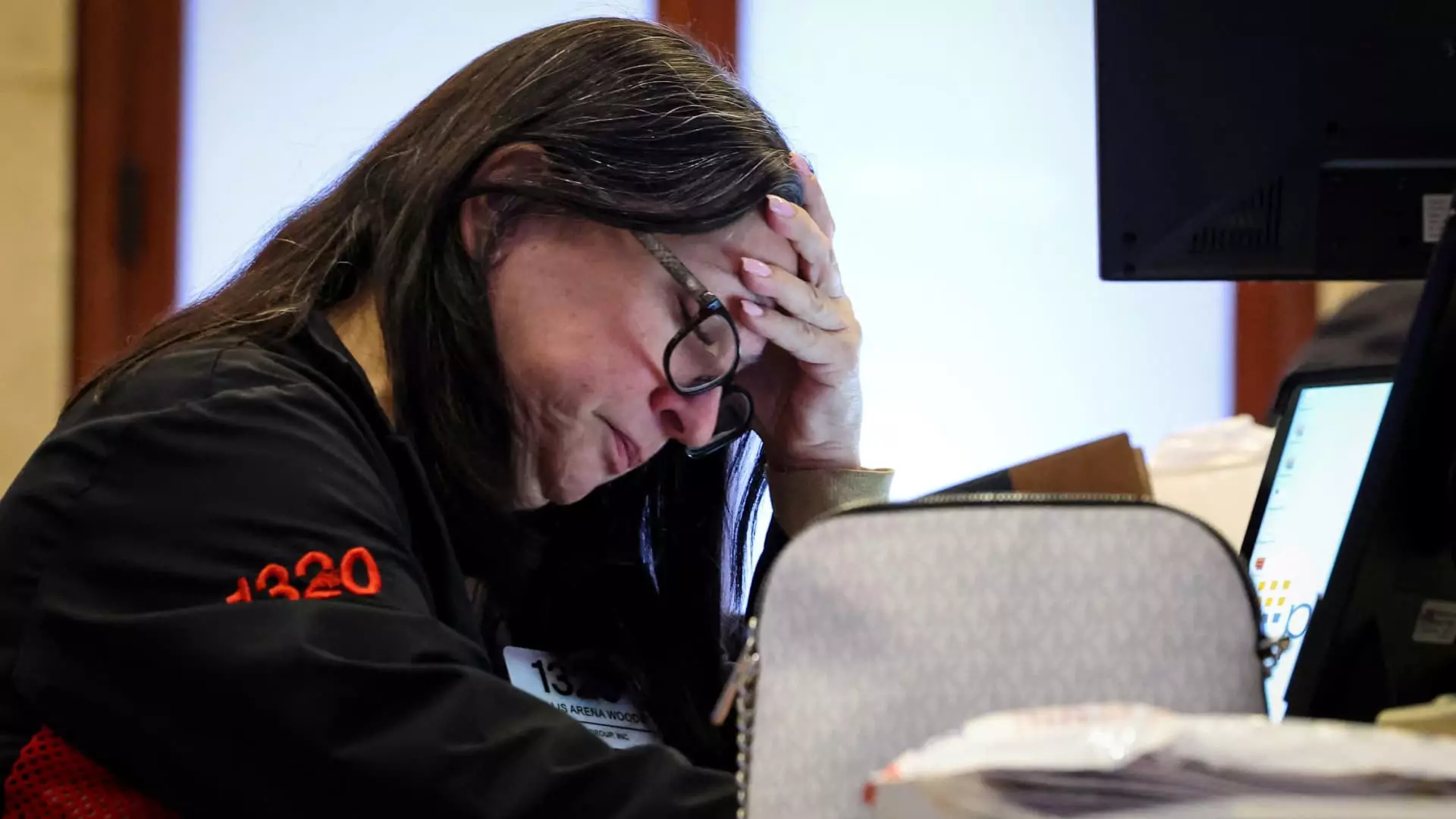In the whirlwind of President Donald Trump’s global trade initiatives, we find ourselves standing precariously on the edge of economic volatility. As Torsten Slok, chief economist at Apollo Global Management, suggests, the imposition of tariffs is not merely a political maneuver but a serious economic gamble with colossal implications. According to Slok, the current trajectory of U.S. economic policy could potentially lower the gross domestic product (GDP) by 1.5% while concurrently pushing inflation upwards by an equivalent margin. It’s painfully evident that the trade war isn’t just a dispute over boundaries but a full-blown crisis that deepens the risk of stagflation—a combination of stagnant economic growth and soaring inflation. He asserts that this is no mere economic theory; it’s unfolding reality.
The very essence of what turns a robust economy into stagnation is the confidence of its consumers and investors. Tariffs can create uncertainty, ultimately leading to reduced spending and investing behaviors—the lifeblood of any economy. When companies scramble to navigate increased costs associated with tariffs, it cascades through the marketplace, reverberating impacts far beyond the trade at hand.
A Market in Retreat
The ramifications extend to our stock markets, where drastic fluctuations have already been observed. With the S&P 500 now grasping onto a precarious position—more than 17% below its peak just weeks ago—investors are understandably skittish. Slok points to a staggering $6 trillion decline in market capitalization, rippling through sectors tied closely to global trade, most notably technology. The so-called “Magnificent Seven,” including titans like Apple and Amazon, witnessed a collective depreciation exceeding $1 trillion in just a matter of days, leading us to question the sustainability of our current market structures.
Moreover, the retreat of the Nasdaq Composite into bear territory raises alarm bells. This bull market was buoyed by optimism around technology stocks, many of which derive substantial revenue from international markets—exactly the sectors most harmed by Trump’s trade policies. A retreat from $6 trillion in market cap is not just a numerical loss; it portends a deep-seated loss of investor trust, which can take years to rebuild.
The Economic Landscape: A Grim Outlook
As we dissect the implications of soaring tariffs and retaliatory measures from nations like China, it becomes clear that the economic landscape appears distinctly grim. Slok discusses the pressing reality that the current outlook contains predominantly downside risks. While the typical economist might find a silver lining, such as potential job creation in certain sectors, the overall consensus leans towards a bleak horizon. Traditional economic theories suggest that trade wars inherently incite stagflation, leading to scenarios where GDP stalls while inflation festers. This nearly cyclical dilemma is not just the domain of theorists but an impending reality that could affect American households and businesses alike.
While the political landscape thrives on promises of industrial revival and protectionist policies, one must ask: at what long-term cost? The current trajectory risks embedding a mindset focused more on isolation than cooperation. Economic health cannot be robust if it is founded on a knee-jerk reaction to global dynamics; instead, we should adopt methods that encourage dialogue, open trade, and mutual growth.
In Search of Solutions
In the realm of economic policy, stagnation is often viewed as the death knell for progress. The first step is a re-evaluation of the current strategies dominating Trump’s approach to trade. Seeking collaboration over conflict will not only stabilize markets but also restore investor confidence, something that has been dramatically shaken in recent weeks. Slok’s analysis serves as a clarion call for a more nuanced policy approach that recognizes the interconnectedness of today’s global economy.
There lies a compelling need for our political leaders to take the long view, focusing on policies that favor sustainable growth rather than short-term political gains. An investment in collaborative strategies with trading partners might produce a healthier economy, spanning across borders, benefiting all involved. The stakes are high, and as the magnitude of potential economic chaos grows, let us hope that wisdom prevails over aggression.

